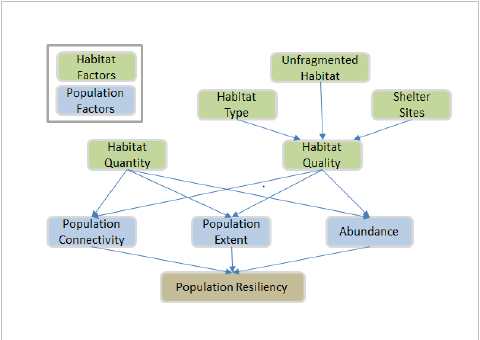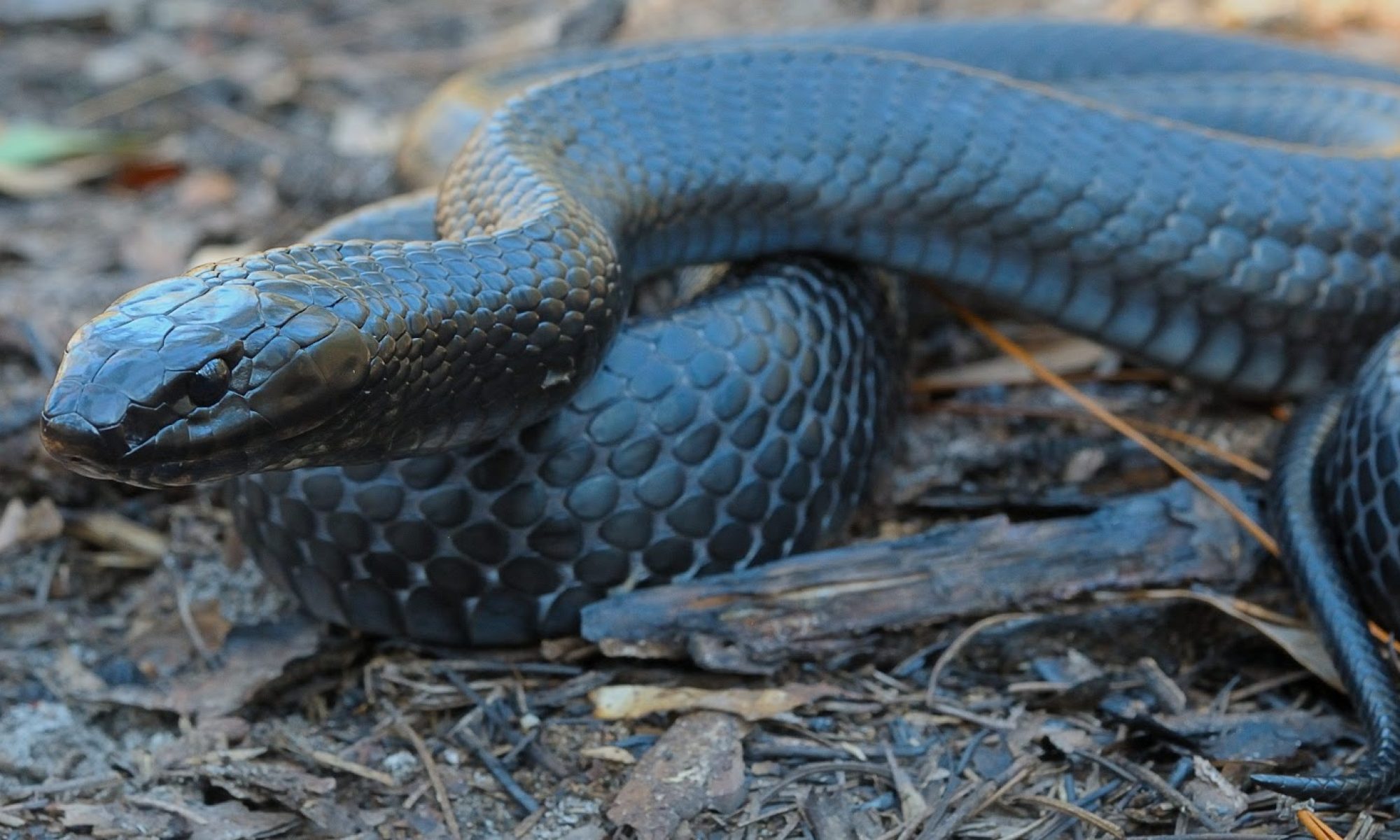Resiliency describes the ability of a population to withstand stochastic disturbance. Resiliency is positively related to population size and growth rate and may be influenced by connectivity among populations. Generally speaking, populations need abundant individuals within habitat patches of adequate area and quality to maintain survival and reproduction in spite of disturbance.
For the eastern indigo snake to maintain species viability, its populations need be resilient enough to withstand stochastic events. Stochastic events that have the potential to affect eastern indigo snakes include temperature changes, drought, hurricanes and flooding, disease, etc. which can impact individuals or the habitat they require for critical life functions such as breeding, feeding and sheltering.
To be resilient to stochastic events, populations of eastern indigo snakes need to have adequate number of individuals (abundance) including all lifestages (breeding adults, juveniles, and hatchlings). The population extent should be large enough such that localized events do not cause extirpation. Populations need connectivity within populations (demographic connectivity) to be able to re-colonize sites after a stochastic event or local extirpation (source-sink dynamics) as well as connectivity between populations (genetic connectivity) to reduce inbreeding (genetic rescue) and contribute to adaptive evolution.
Population level characteristics (population extent, population connectivity and abundance) that influence resiliency are influenced by habitat conditions. Due to the species’ relatively low densities and its cryptic behavior we have limited range-wide information of what defines a biologically distinct population of eastern indigo snakes (see section 5.1 for additional discussion), including population sizes and trends. However, important information on the life history and habitat use for this species has been gained from research studies. Adequate population connectivity, population extent and abundance are influenced by habitat quality (habitat type, fragmentation [including presence of roads and urbanization] and presence of shelter sites) and habitat quantity (Figure 16).

Habitat Quality
Resilient eastern indigo snake populations need good habitat quality of sufficient size with connectivity among populations. While they occupy a wide range of natural and human-altered habitat types (see section 2.5.2), eastern indigo snakes need a diversity of natural habitat types (e.g. scrubby flatwoods, longleaf pine sandhills, oak scrub, sand pine scrub, dry prairie, tropical hardwood hammocks, agricultural fields, coastal dunes, etc. ) to support essential life functions of breeding, feeding, and sheltering. It is believed that a combination of both natural upland (primary habitat) and lowland (secondary habitat) habitat provides the best matrix of habitat types to support resilient eastern indigo snake populations. Most of these upland habitat types depend on periodic fire to maintain good quality. Throughout its range, shelter sites are needed year-round by eastern indigo snakes for thermoregulation, foraging, nesting, and mating. In Georgia and northern Florida, eastern indigo snakes depend on upland xeric sandhill habitats and the availability of gopher tortoise burrows for thermal shelter during winter.
Habitat fragmentation is a critical factor affecting eastern indigo snake population resiliency and persistence. Breininger et al. (2012 p. 364) suggest that snake survival is highest in “conservation cores” that are not fragmented by roads and that survival decreases with increasing fragmentation and presence of roads. Increased exposure to roadways likely increases road mortality due to the species’ large home range (largest in North America, ranging from several hundred to several thousand acres, see section 2.5.1), active foraging behavior, conspicuous body size, and high movement potential (Bauder et al. 2018 p.757). Numerous studies have documented direct mortality of eastern indigo snakes on roads (Breininger et al. 2011, 2012, Hyslop et al. 2014, Ceiley et al. 2014, Godwin and Steen 2017) and many eastern indigo snake records are from sightings on roads (see section 4.2). Bauder et al. (2018, p.751) found that probability of crossing roads decreased with increasing distance from roads and this distance was greatest for breeding males (who may move long distances in search of females). Habitat fragmentation also negatively impacts eastern indigo snakes by reducing fire spread and disrupting the ability to conduct prescribed fire which is necessary for maintaining good quality habitat throughout much of the species’ range.
Degraded habitat quality has the potential to impact population resiliency by inducing stress on individuals (e.g. reduced shelter and foraging habitat), impacting breeding and reproductive success, causing direct mortality and limiting connectivity and the ability to re-colonize areas after stochastic events. Therefore, extensive tracts of land with diverse, unfragmented habitat are important to support viable eastern indigo snake populations (Diemer and Speake 1983, Breininger et al. 2004, Dodd and Barichivich 2007, Breininger et al. 2011, 2012, Hyslop et al. 2012). Lastly, degraded habitat quality can negatively impact the ability for long-distance movement and reduce genetic exchange among populations increasing the risk of extinction due to inbreeding and reduced capacity for evolutionary adaptation (Carlson et al. 2014, p. 523).
Habitat Quantity
In addition to large home ranges, eastern indigo snakes exhibit a low degree of home range overlap, especially among adult males (Hyslop et al. 2014, Bauder et al. 2016a). And, although some species may expand their home range when habitat quality declines (Van Horne 1983, entire), studies on eastern indigo snakes in central Florida found that home ranges in urban and fragmented landscapes were significantly smaller than those snakes in more natural landscapes (Breininger et al. 2011, entire, Bauder et al. 2018, p. 755). Although the authors lacked data to test these conclusions, Breininger et al. (2011, p. 488) suggest smaller home ranges may be because snakes in suburban areas moved less due to the abundance of food, or they altered their behavior to reduce mortality risk, or that they are able to occupy less pristine settings due to their general habitat preferences (in central Florida) and variable diet. However, smaller and fragmented habitat may reduce the snake’s ability to find mates, disrupt gene flow and alter availability of prey (Breininger et al. 2011, p. 489), unless the snake moves further distances which increases mortality due to roads and predation. Therefore, eastern indigo snake populations need large tracts of good quality habitat to sustain reproducing populations (Moler 1992, Breininger et al. 2004, Breininger et. al. 2011, Breininger et al. 2012, p. 366).
